Main information:
Linderhof Palace
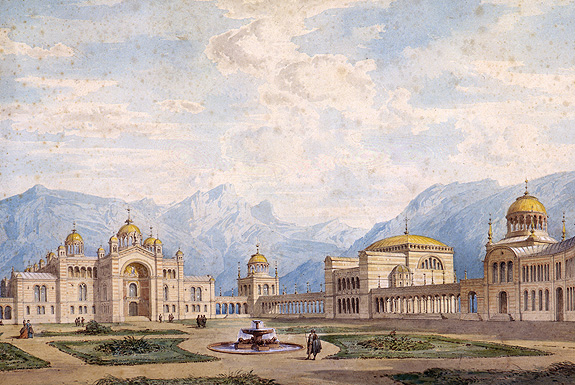
First Byzantine palace project,
watercolour by
Georg Dollmann, 1869
Photo: Bayerische Schlösserverwaltung, Lucinde Weiss
The origin of Linderhof
Dreams and realities
Ludwig II, who was crowned king in 1864, began his building activities in 1867/68 by redesigning his rooms in the Munich Residenz and laying the foundation stone of Neuschwanstein Castle.
In 1868 he was already making his first plans for Linderhof. However, neither the palace modelled on Versailles that was to be sited on the floor of the valley nor the large Byzantine palace envisaged by Ludwig II were ever built. Instead, the new building developed around the forester's house belonging to his father Maximilian II, which was located in the open space in front of the present palace and was used by the king when crown prince on hunting expeditions with his father. Linderhof Palace, the eventual result of a long period of building and rebuilding, is the only large palace King Ludwig II lived to see completed.
From forester's house to Royal Lodge
In 1869 Ludwig II had the forester's house rebuilt and appointed as the "Royal Lodge" (building phase 1).
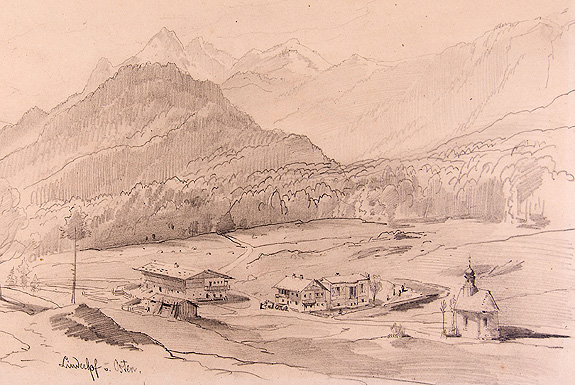
Royal Lodge (building phase 1)
with an
extension (building phase 2) next to
the
original Linderhof
farmhouse, pencil sketch, 1871
Photo: Stefan Nadler
The addition of wooden extensions
In 1870, under the supervision of the court building director Georg Dollmann, a wing with a single axis was added (building phase 2). While this extension was still being completed, the original plans for the building were substantially revised.
From spring 1871 a second wing was built to match the first extension, with a bedroom forming the connection between the two wings (building phase 3). A wooden staircase on the west side provided access to the u-shaped complex built around an open courtyard.
The Royal Lodge thus became superfluous; the initial retention of this building indicates the king's emotional attachment to it.
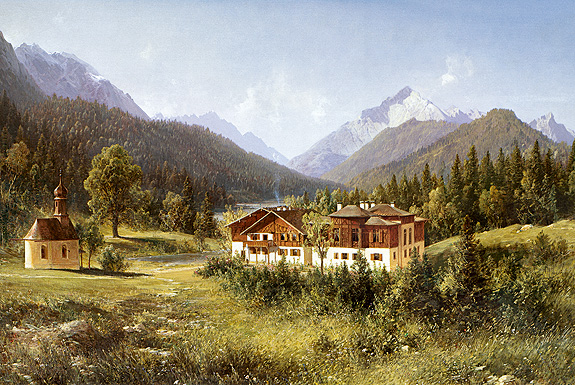
The Royal Lodge
(= former forester's
house;
building phase 1)
with the
u-shaped
extension of
the Alpine Hut Building
(building phases 2/3),
oil painting, 1872
Photo: Bayerische Schlösserverwaltung, Lucinde Weiss
The complex thus created forms the core of the palace. Its upper floor was a wooden post and beam construction clad with boards, while the lower floor was plastered; because of the wooden structures it was known as the "Alpine Hut Building". Its simple exterior, however, gave no hint of the splendour inside.
Stone cladding
An overall architectural solution was however necessary to unite the results of the piecemeal construction process. In February 1873, King Ludwig II approved a plan which established the final design of the palace.
First the wooden construction was clad with solid stone and covered with a cross-shaped complex of new roofs (building phase 4). This section of the building formed the core of the new palace, but it still had no interior staircase.
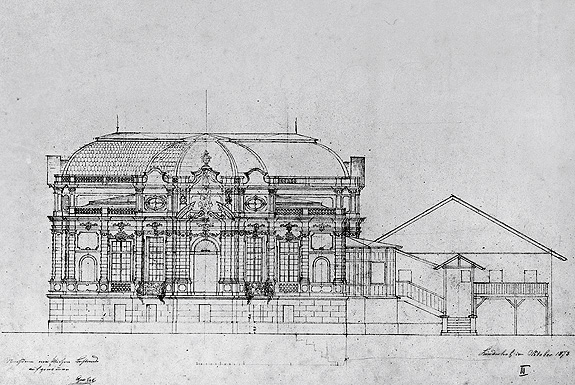
Plan for the west façade
after
the stone cladding
(building phase 4)
and
with
the Royal Lodge still in place, 1873
Photo: Christian Misniks
Completion of the entrance tract
On 20 January 1874 the king gave permission for the "Royal Lodge" to be moved to its present location, around 200 metres away, and the new south tract was built in its place (building phase 5).
It was only now that the exterior of the palace acquired its final form, and the vestibule and staircase were incorporated in the interior. By 1876 work on the interior of the south tract was also complete.
Creation of the landscape park
The transformation of the "Alpine Hut Building" into the "Royal Villa" had marked consequences for its surroundings. In 1874 the final plans for the park were submitted by court garden director Carl Joseph von Effner.
Enlargement of the bedroom
In 1885/86 there was a final rebuilding phase. The bedroom, as the central room in the complex, was widened and extended to the north (building phase 6). This required extensive rebuilding of the palace and a new central section for the north façade, including a new roof for this area. No further additions were made to the palace, which now measured 30 x 27 metres, after King Ludwig II died in 1886. He did not live to see the completion of the new bedroom.
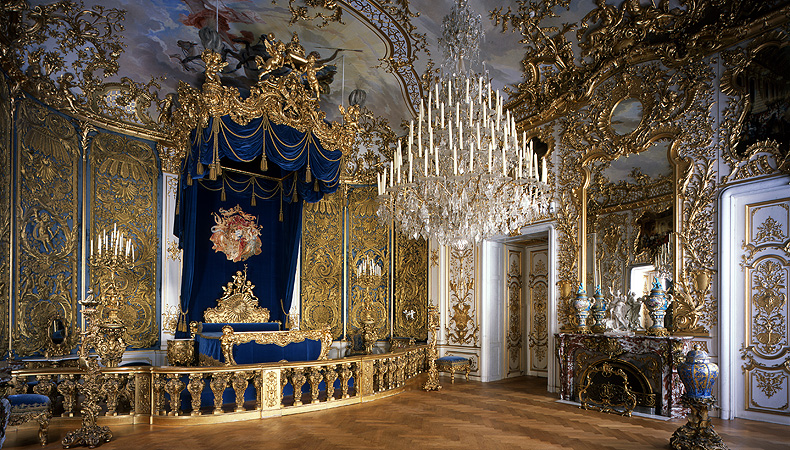


Facebook Instagram YouTube